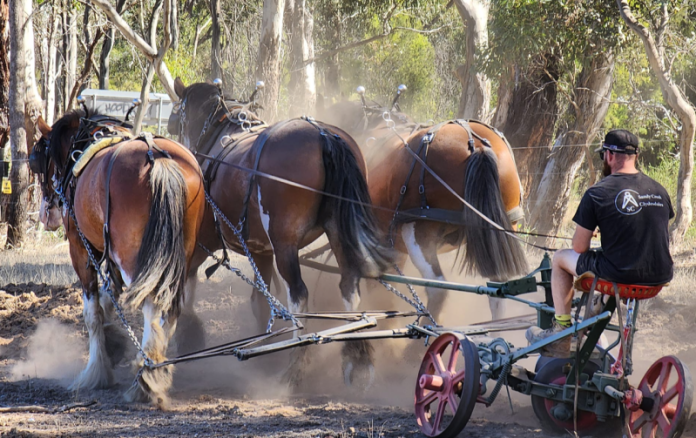Although horses no longer perform the major traction and transport roles they once did in our society, our increased human population, growing affluence (a very lucrative racing industry) and our enduring affinity with our equine friends means there are more horses in Australia now than at the end of the 19th century.
All these factors, and central Victoria being a bit of a ‘horse centre’, make horse manure the most readily available compost manure in our region. It is a great place to live if you are a backyard composter!
Advice about horse manure also applies to other equine species, like ponies, donkeys and zebras (if you can find any).
It is hard to make generalisations about horse manure. It can come in so many states; fresh, aged, very wet, very dry, mixed in with straw or sawdust bedding or scooped up with lots of leaves and grass from the paddock.
When fresh and wet, and pretty much only poo, horse manure is just at the nitrogen-rich end of the carbon:nitrogen spectrum (20 – 25:1), but not so high that it will go totally putrid on its own.
When the manure comes mixed with carbon-rich material like straw or leaves (that might have been collected from the paddock or barn) it can be very close to an ‘ideal’ balanced compost ingredient.
When piled up this ‘manure mix’ will almost compost on its own. It might be tempting to try to make a ‘horse manure only’ compost, but to make really good compost diversity is important. Having said that, horse manure/straw mix is a great compost ‘padder’ and can easily make up 20 per cent of a happy compost pile.
Horse manure left in the paddock for a while – particularly over summer – can get quite dry and powdery, it can look like carbon-rich fine dusty straw. But, be aware, once we wet it (important to do) and add it to the compost, the residual nitrogen in the manure will be reactivated, so don’t treat it like a carbon-rich ingredient even if it can look like it is.
Horse manure alone will not add structure or good aeration to our compost piles, it is too fine. So, make sure it always gets layered in with structural ingredients, like coarse straw and chopped up stemmy garden prunings and weeds.
Despite being a very available resource in our area, the use of horse manure in our compost is not all rosy, and there are problems to look out for, and things to avoid.
Next week we will delve into some of these problems, like residual worming treatments and persistent herbicides. We have a local veterinarian joining the conversation to provide some advice on good horse management and how all this links back to healthy soil and healthy compost (and healthy horses and people as a result).
– Joel Meadows works with *Yes In My Back Yard, (YIMBY), a community-scale composting initiative in Castlemaine and surrounds. Send questions or comments to hello@yimbycompost.com, or to book in for a compost workshop.








